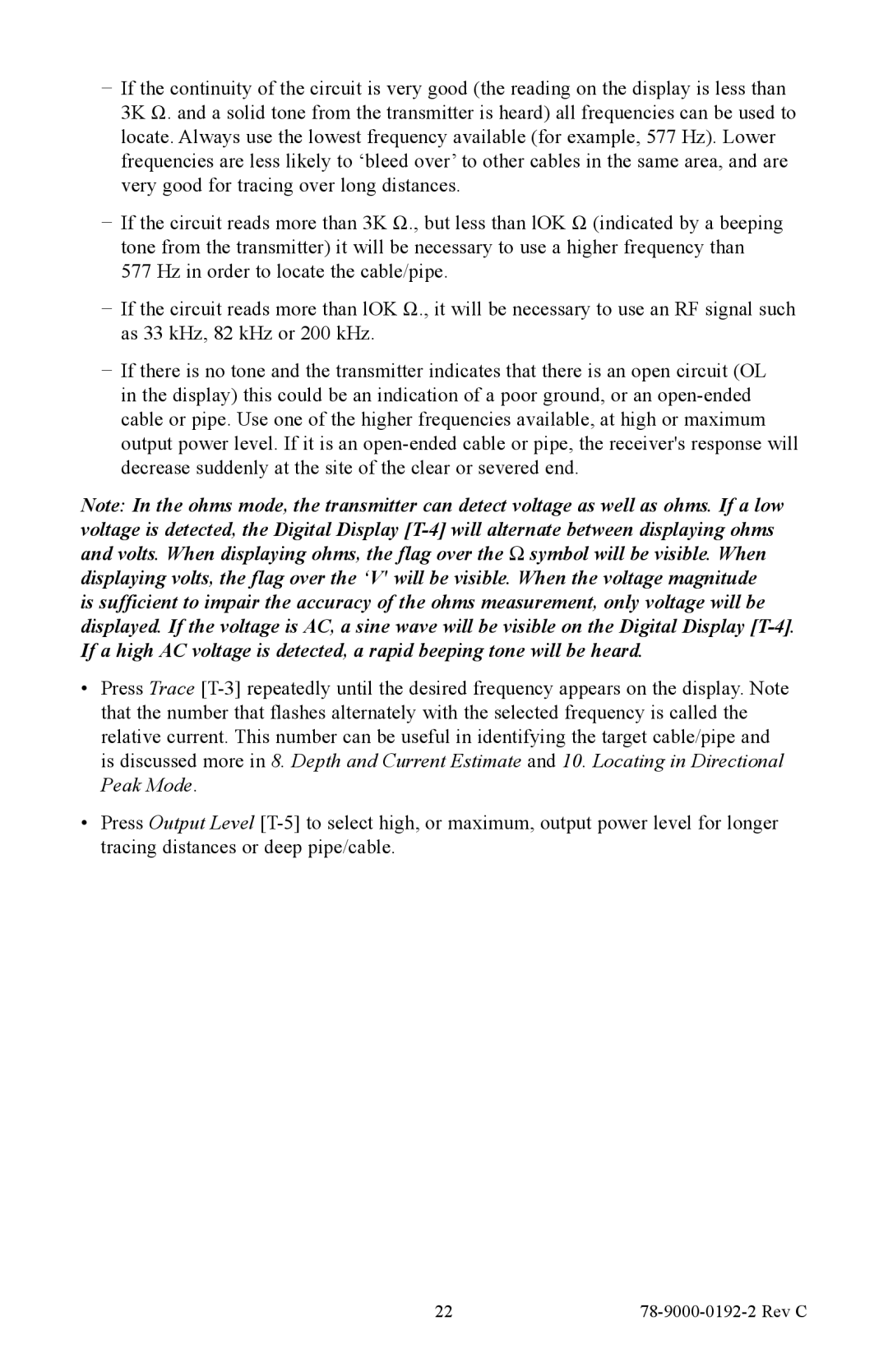−− If the continuity of the circuit is very good (the reading on the display is less than 3K Ω. and a solid tone from the transmitter is heard) all frequencies can be used to locate. Always use the lowest frequency available (for example, 577 Hz). Lower frequencies are less likely to ‘bleed over’ to other cables in the same area, and are very good for tracing over long distances.
−− If the circuit reads more than 3K Ω., but less than lOK Ω (indicated by a beeping tone from the transmitter) it will be necessary to use a higher frequency than 577 Hz in order to locate the cable/pipe.
−− If the circuit reads more than lOK Ω., it will be necessary to use an RF signal such as 33 kHz, 82 kHz or 200 kHz.
−− If there is no tone and the transmitter indicates that there is an open circuit (OL in the display) this could be an indication of a poor ground, or an open-ended cable or pipe. Use one of the higher frequencies available, at high or maximum output power level. If it is an open-ended cable or pipe, the receiver's response will decrease suddenly at the site of the clear or severed end.
Note: In the ohms mode, the transmitter can detect voltage as well as ohms. If a low voltage is detected, the Digital Display [T-4] will alternate between displaying ohms and volts. When displaying ohms, the flag over the Ω symbol will be visible. When displaying volts, the flag over the ‘V' will be visible. When the voltage magnitude is sufficient to impair the accuracy of the ohms measurement, only voltage will be displayed. If the voltage is AC, a sine wave will be visible on the Digital Display [T-4]. If a high AC voltage is detected, a rapid beeping tone will be heard.
•Press Trace [T-3] repeatedly until the desired frequency appears on the display. Note that the number that flashes alternately with the selected frequency is called the relative current. This number can be useful in identifying the target cable/pipe and is discussed more in 8. Depth and Current Estimate and 10. Locating in Directional Peak Mode.
•Press Output Level [T-5] to select high, or maximum, output power level for longer tracing distances or deep pipe/cable.
